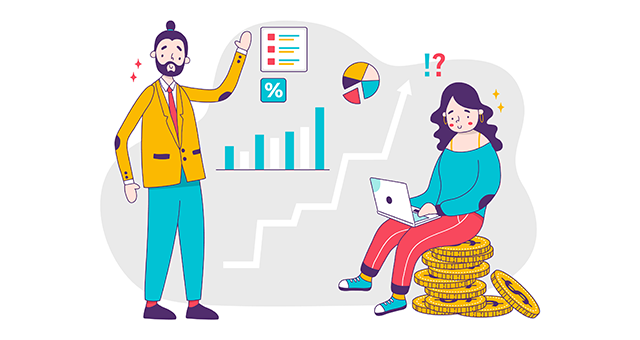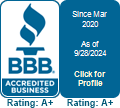
Personal Loan Glossary: 12 Key Terms to Enhance Your Financial Literacy
A personal loan can be an adaptable and flexible approach to pay off debt, fund a significant purchase, or cover unexpected expenses. But, entering the realm of personal loans can feel like stepping into a maze of unfamiliar terminology. The terms from APR to amortization fees used in loan agreements and discussions can be overwhelming.
However, understanding this often-used loan terminology is crucial. With this knowledge, you can broaden your vocabulary to assess a loan or compare loans from several lenders. In this post, we’ll walk you through twelve key terms to help you navigate the borrowing process with confidence and clarity.
Let’s get started!
1. Annual Percentage Rate (APR)
When you apply for a personal loan, the Annual Percentage Rate, or APR, is the amount you agree to repay each year.
Is it equivalent to the rate of interest? Not precisely! The annual percentage rate, or APR, for a personal loan, is a percentage rate that combines the interest rate and any yearly fees. Therefore, you can obtain a comprehensive understanding of the annual cost of the loan by examining the annual percentage rate. The annual percentage rate is the most appropriate benchmark to compare loan offers.
However, what would happen if your loan has no annual fees assessed by your lender? The interest and annual percentage rates are the same in this scenario.
2. Cosigner
A person who signs a personal loan jointly with the borrower is known as a cosigner. They guarantee to repay the loan if the principal borrower cannot do so by accepting the loan terms. A spouse, family member, or acquaintance may cosign.
If your income or credit score prevents you from qualifying for a loan, including a cosigner on your application is a great idea. If you sign up with a cosigner, you may qualify for preferential interest rates, and your application will be approved faster. However, if the borrower falls behind on the loan or fails to make a payment, it can harm the credit of both the borrower and the cosigner.
3. Credit Rating
A three-digit figure that reflects your credit history is your credit score. Lenders assess your creditworthiness or risk as a borrower based on your credit score and other variables like income. If you have a poor credit score, getting approved for a personal loan can be difficult, especially with the lowest interest rate, because it indicates you are a riskier borrower. You may get the best terms and prices on a personal loan if you have a good credit score.
4. Debt-to-Income Ratio (DTI)
Your debt-to-income ratio is your monthly debt commitments divided by your gross monthly income. It helps lenders assess your ability to manage additional debt responsibly and is a factor in determining your loan eligibility and interest rate. A lower DTI ratio usually indicates less financial strain and may result in more favorable loan terms.
5. Default
Default occurs when you fail to repay your loan according to the terms outlined in the loan agreement. It can result in severe consequences, including damage to your credit score, collection efforts by the lender, and legal action. Understanding what constitutes a default and the potential repercussions can help you avoid financial hardship and protect your creditworthiness.
6. Fixed and Variable Interest Rates
When you apply for a fixed-rate personal loan, the interest rate you see is the same as it will be for the duration of the loan. It simplifies the process of creating a monthly budget for debt payments.
Although most personal loans have fixed interest rates, some have variable rates that change based on the prevailing national interest rates. These rates may rise significantly throughout the loan, meaning the monthly payments will be higher, and the borrower will pay more interest over time.
7. Hard Inquiry and Soft Inquiry
Lenders conduct two types of credit inquiries to assess your creditworthiness: soft and hard, also known as soft pull and hard pull.
A soft inquiry is the process of verifying your credit history to prequalify you for a personal loan. It does not affect your credit ratings.
When you formally apply for a personal loan or another credit product, the lender will run a hard inquiry to check your credit history. Hard inquiries may decrease your score by four points (typically a minor effect).
A hard credit check stays on your credit report for two years. However, MyFico and other credit reporting companies only consider hard credit checks from the previous 12 months.
Therefore, you should apply for a personal loan only when necessary, though this shouldn’t stop you from applying for credit.
8. Installment Loan
A loan with a set payback duration specified in the loan agreement is an installment loan. For example, when you refinance high-interest debt using a personal loan. The lender will demand that you repay the loan with monthly payments or installments once you receive the lump sum payment.
9. Loan Amortization
Making fixed monthly payments to pay off a personal loan is known as amortization. The monthly payment amounts, due dates, and percentages that will be applied to principal and accumulated interest are all outlined in your loan’s amortization schedule.
10. Origination Fee
Origination fees are a one-time charge levied by some lenders and subtracted from the loan amount to cover associated costs. The fee covers underwriting, processing, and administration expenses. For instance, if the lender charges a 5% origination fee on a loan of $15,000, it would result in $14,250 in your account ($15,000 – $750).
11. Prepayment Penalty
There is a cost associated with early loan payback, known as an early payout fee or prepayment penalty. When you repay your loan before the end of the term, either partially or in full, lenders lose some money to interest; payback penalties help them make up that difference. It may deter borrowers from refinancing or paying off their loans early.
Be sure to check if your loan agreement includes a prepayment penalty and understand its implications before signing. Also, some lenders do not impose these fees, so look around for a loan without an early payment cost if you intend to pay off a personal loan early.
12. Term or Tenure
The term, or tenure, refers to the time (in months) you have to pay off a loan. Personal loan terms typically range from 12 to 60 months, although they can be shorter or longer depending on the lender and the borrower’s preferences. Selecting a longer loan term will result in lower monthly payments, but it will also increase the cost of the loan as interest will accrue over a longer duration. Lenders also sometimes demand higher interest rates for lengthier loan durations. A shorter-term loan will be less expensive, but you will make larger monthly payments.
The Takeaway
By familiarizing yourself with these key terms related to personal loans, you can compare loan offers, choose the right loan product for your needs, negotiate terms with lenders, or plan a repayment. A clear understanding of the terminology will enable you to go through the process confidently and achieve your financial goals while avoiding costly pitfalls.


